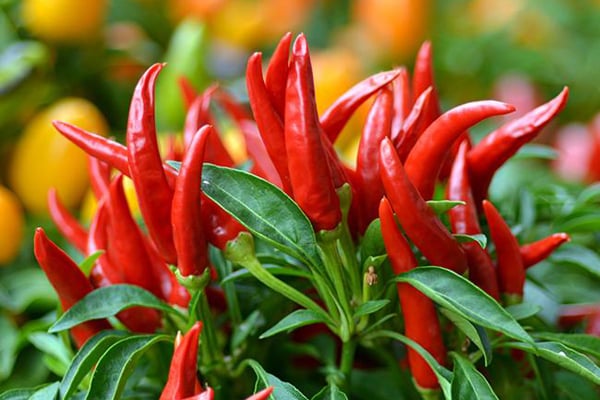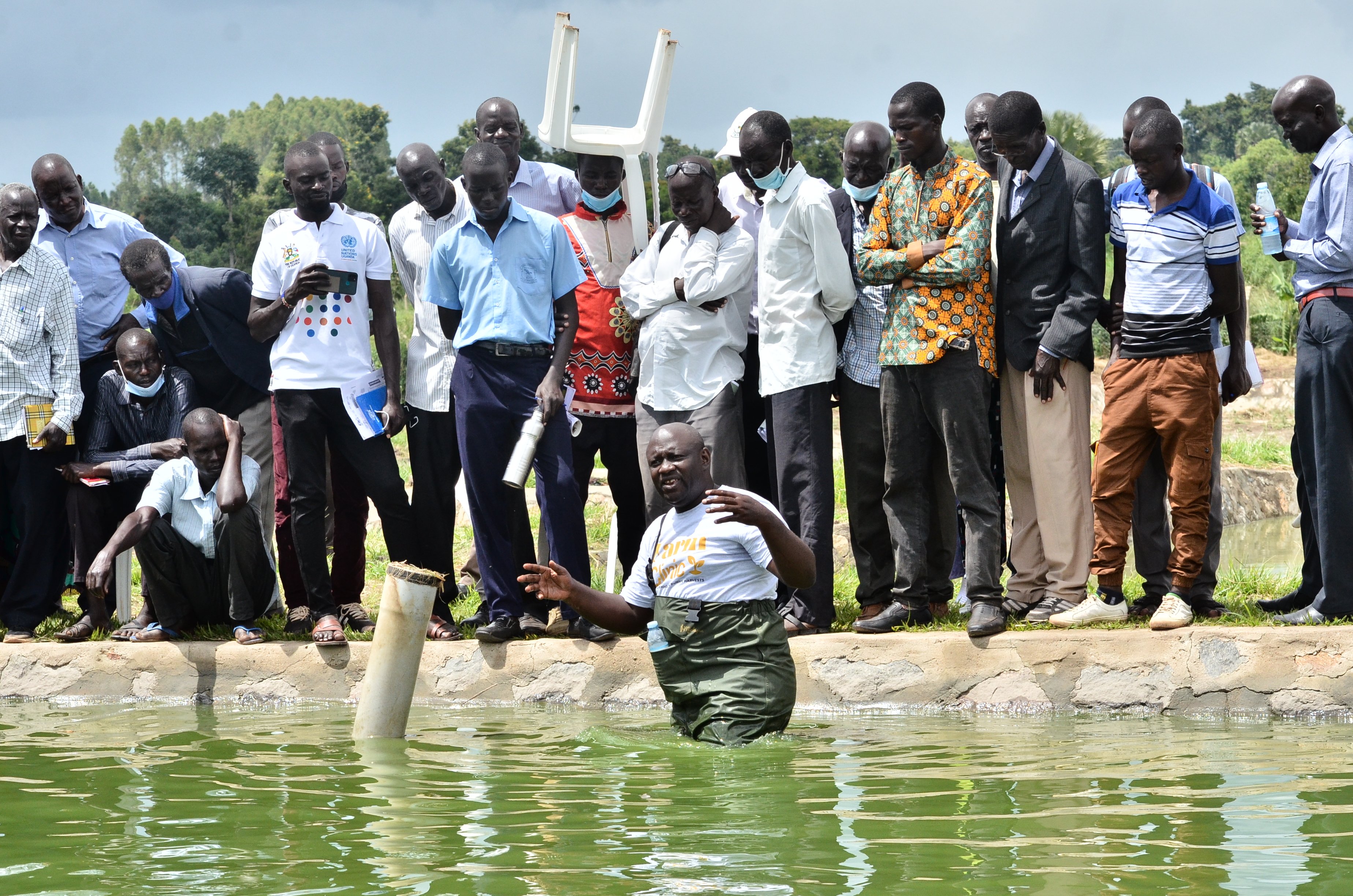Prime
Farm clinic: A guide for soya bean agronomy

Alex Rwanja from the Bank of Uganda attentively engages in soybean farming training during the Seeds of Gold Farm Clinic in Arua. PHOTO/FILE
What you need to know:
- Soybeans require consistent moisture levels throughout their growing stages to thrive. Adequate water supply helps with nutrient uptake and overall plant health.
The 40th edition of the Seeds of Gold Farm Clinic, mainly sponsored by Bank of Uganda and Stanbic Bank will this morning be staged at Ngetta Zardi, Lira District.
More than 2000 farmers are expected to attend the training which will focus on soyabeans, fish farming, dairy and rice farming among others.
The article below will guide you about the agronomy of soyabeans which is one of the main cash crop grown by farmers here in Lira and its surrounding districts.
Soybeans
Soybean plants have a rich history dating back thousands of years to ancient China, where they were first cultivated as a vital crop for their nutritional value.
The importance of Soybeans cannot be overstated. They are a valuable source of protein, oil, and nutrients used in various food products ranging from tofu to cooking oils.
Additionally, soybeans play a crucial role in animal feed production, biofuel manufacturing, and even industrial applications like plastics and cosmetics. With their versatility and nutritional benefits, it’s no wonder that soybeans have become one of the most widely grown crops globally.
Agronomy
Before making a decision on which soybean seeds to plant, research each variety thoroughly to ensure it fits your farm’s requirements.
Soil requirements
Soybeans thrive in warm climates with temperatures ranging from 20 to 30°C. They require adequate sunlight for photosynthesis, making full sun exposure essential for optimal growth. Additionally, Soybeans prefer well-drained, loamy soil with a pH level between 6 and 7.
The soil should be rich in organic matter and nutrients such as nitrogen, phosphorus, and potassium to support healthy plant development. It is crucial to make a soil test before planting to assess nutrient levels and make any necessary amendments. Soybeans are sensitive to waterlogging, so it’s important to ensure proper drainage in the field.
Sandy soils drain quickly but may require more frequent irrigation during dry periods. Clay soils hold moisture better but can become compacted if not managed properly.
Preparing your land
Start by clearing any debris from the field to ensure a clean slate for planting. Next, conduct soil tests to assess nutrient levels and pH balance, making necessary amendments if needed. Properly tilling the soil is essential for creating a loose and well-aerated environment that promotes healthy root development in Soybean plants.
Consider using conservation tillage practices to minimise erosion and maintain soil structure. Additionally, ensure proper drainage to prevent waterlogging issues during growth stages. When preparing your land for soybean cultivation, take into account factors like sunlight exposure and wind patterns that can impact plant growth. Proper spacing between rows is also crucial for optimising plant density and maximising yields at harvest time.
Planting
Planting too early or too late can affect crop establishment. Plant your soybeans at a depth of about 1 to 1.5 inches in well-drained soil with good fertility levels. Ensure proper seed-to-soil contact for uniform germination. Space rows around 30 inches apart to allow adequate sunlight penetration and airflow for healthy plant growth. Consider using no-till or minimum tillage practices to conserve soil moisture and reduce erosion during planting. Avoid planting during periods of excessive rainfall, which may lead to waterlogged soils that affect seedling emergence.
Irrigation
Soybeans require consistent moisture levels throughout their growing stages to thrive. Adequate water supply helps with nutrient uptake and overall plant health. Drip irrigation or overhead sprinklers are common methods used for irrigating soybean fields. Drip systems deliver water to the roots, while sprinklers cover larger areas efficiently.
Adjusting irrigation schedules based on weather conditions is essential. During hot and dry periods, increasing watering frequency can prevent stress on the plants. Implementing proper drainage systems helps prevent waterlogging, which can lead to issues. Good drainage ensures that excess water does not accumulate around the roots of soybean plants.
Nutrient management
Understanding soybeans’ nutrient requirements is key to achieving high yields. N, P, and K (Nitrogen, phosphorus, and potassium) are essential nutrients for soybean plants. Before planting, conducting soil tests can help determine which nutrients may be lacking in the soil.
Based on the results, farmers can then tailor their fertilisation plan accordingly. Applying fertiliser at the right time is also important to maximise nutrient uptake by the plants.
In addition to NPK fertilisers, micronutrients such as zinc and boron are vital for healthy soybean development. These micronutrients should be applied in precise amounts, as deficiency or excess can negatively impact plant growth.
Weed control strategies
Weed control is a crucial aspect of soybean farming that requires careful planning and implementation. To effectively manage weeds in your soybean fields, consider using a combination of cultural, mechanical, and chemical control methods. Cultural practices can help disrupt weed growth cycles and reduce weed pressure over time. Implementing proper tillage techniques can also help suppress weed populations by disturbing their root systems.
Mechanical controls, such as hand weeding, or using mechanical tools, such as cultivators, can be effective for removing weeds manually or mechanically without the use of chemicals. When it comes to chemical control, herbicides are commonly used to target specific weed species while minimising damage to the soybean plants. It’s essential to select herbicides carefully based on the type of weeds present in your fields and follow instructions for application rates and timing.
Pest and disease management
Some common soybean pests to watch out for include aphids, bean-leaf beetles, and soybean loopers. If not managed effectively, these insects can cause significant damage.
On the disease front, keep an eye out for issues such as soybean rust, root rot, and sudden death syndrome. These diseases can spread in favorable conditions, leading to crop losses if left unchecked.
To combat pests and diseases in your soybean fields, consider implementing integrated pest management strategies. This approach involves a mix of cultural practices, biological controls, and the use of pesticides when necessary. Regular scouting of your fields is essential to detect any pest or disease outbreaks early on.
Harvesting
Soybeans are ready for harvest when the bean pods have turned yellow and contain seeds that are firm to the touch. Some farmers may opt for manual harvesting methods in smaller-scale operations.
Handpicking involves physically removing pods from the plants before further processing. Timing your soybean harvest correctly can significantly impact crop quality and yield. Harvesting too early can result in underdeveloped soybean seeds, while waiting too long may lead to shattering and seed loss.
Post-harvest handling and storage
After successfully harvesting your soybeans, the next crucial step is post-harvest handling and storage. Properly handling and storing soybeans can make a significant impact on their quality and market value.
Ensure that you promptly remove any debris or foreign materials from the harvested soybeans. This helps prevent contamination and maintains the overall quality of the crop.
Drying is an essential step in post-harvest handling. Soybeans should be dried to reduce moisture content to around 13 percent for safe storage. Excess moisture can lead to spoilage. When it comes to storage, select a well-ventilated area to store your soybeans. Proper ventilation helps prevent heat build-up and condensation, which can cause deterioration.




